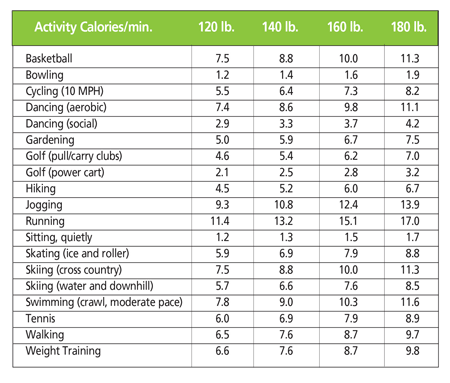 |
| Fahey, Insel and Roth, Fit and Well |
Knowing our body composition is a useful measure of fitness. It can be determined in a number of ways. The most common method being bio-electrical impedance. You can read more about the different measuring methods and tools here. In order to improve the odds of achieving weight loss this year, it's important to understand how our weight and body composition are influenced by our energy expenditure. So let's take a closer look.
Energy equation - Generally speaking, too much or too little body fat results from an energy imbalance (1). You may be familiar with the energy equation:
The way the body regulates weight is actually quite complex, but the simple picture is that when a person's food intake (energy in) is in balance with their calorie expenditure (energy out) their body weight usually remains stable. If food intake is less than the calories expended, weight loss usually occurs. Conversely, if more calories are taken in than are used up, the body stores these excess calories as fat, and a person typically gains weight.
A few interesting fat facts: Body fat isn't all fat. It's composed of a mixture of fat (87%), some protein and water. A pound of body fat = 3500 calories. A healthy adult can have an ample reserve of fat stores at anywhere from 50,000 to 200,000 calories (1). Fat is stored by the body as fuel for energy. Our bodies need essential fat. The health benefits of eating the right types of dietary fats were discussed in previous posts, The Skinny on Fat, More Skinny on Fat and Understanding the Omegas. It's only when there is an excess of fat that health problems can result. This brings us to how our body composition is influenced by the body's energy needs.
Energy In
Food and beverages provide the energy in. The amount of energy provided depends on the type and amount of things a person eats and drinks. The 3 major macronutrients found in food that provide energy are: carbohydrates, fats and proteins. Heat is given off when the body breaks down or metabolizes food. This is measured in kcalories, or what we more commonly refer to as calories. Scientists have determined that:
- 1 gram of carbohydrate = 4 kcalories
- 1 gram of fat = 9 kcalories
- 1 gram of protein = 4 kcalories
- 1 gram of alchohol = 7 kcalories
Energy Out affected by 3 factors:
Basal Metabolic Rate- The "energy out" part of the energy balance equation occurs whenever the body uses calories for energy. The good news is we expend energy constantly just staying alive. This is called our basal metabolism. "About two-thirds of the energy the average person expends in a day" is used to maintain life. Everyone has their own unique basal metabolic rate (BMR) and the BMR can fluctuate in an individual depending on their physical condition or circumstances (1). The chart below lists the factors that influence BMR.
 |
| Whitney and Rolfes, Understanding Nutrition, 11th ed. |
Physical Activity - Energy output is also affected by our level of physical activity, and this is one area where we can affect a change in the composition of our bodies. By increasing physical activity we accelerate the amount of energy needed to support the work of the muscles and other body systems. Different kinds of physical activities, as well as the frequency, intensity and duration of the activity will influence energy demands. In addition, body mass and body weight play a role in the amount of energy needed. The chart below lists a few activities and their corresponding number of calories burned per minute while we are engaging in them.
 |
| ACE Fitness |
So what's all this have to do with the fat burning zone? We'll delve into this in more detail when I post about the exciting world of physical activity, the energy systems and what this means to us in terms of burning calories no matter what zone we are in. In the meantime, keep up the good work with those resolutions and keep making fitness a priority in your lives!
Sources
(1) Whitney, E., Rolfes, S., Understanding Nutrition 11th ed., Thomson Wadsworth
(2) http://en.wikipedia.org/wiki/Metabolism
(3) Fahey, T., Insel, P., Roth, W., Fit & Well: Core Concepts in Physical Fitness and Wellness, 6th ed.
(4) Starbucks nutrition info http://www.starbucks.com/menu/drinks/vivanno-smoothies/strawberry-vivanno-smoothie


This comment has been removed by a blog administrator.
ReplyDeleteSo keep those gerbal devices (er tread mills) going while consuming those yummy snacks & beers while watching Da Bears! Thanks for this awesome post. Good reminder on the need to balance that intake with activity. Also, got me a new brain wrinkle. Now I know how calories are calculated for foods. How cool, it's all math!
ReplyDelete